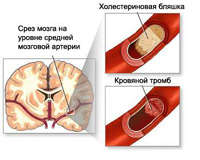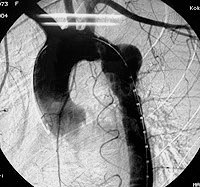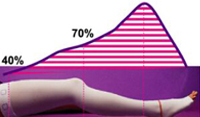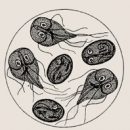The first symptoms of the atherosclerosis of the brain vessels usually appear aged 60-65 years and are interpreted as signs of aging. Is it really? Learn the truth about Atherosclerosis
Content
Atherosclerosis of the brain arteries – This is one of the most common forms of atherosclerosis. Atherosclerosis may affect both intracranial and extra charge vessels, feeding brain. The severity of symptoms of atherosclerosis of the brain vessels depends on the degree of damage to the vessels of the supply brain. Against the background of atherosclerosis of the brain vessels, there is a gradual deterioration of the activities of the central nervous system, it is possible to develop stroke or mental disorders.
Atherosclerosis of brain vessels
The blood supply of the brain is carried out by a complex system of blood vessels. To the brain, the blood comes in 4 major arteries: two carotid arteries and two vertebral artery (extraction arteries). Atherosclerosis of these arteries can significantly disrupt blood circulation on them, which in turn affects blood supply and brain.
In addition to extraseciented vessels, atherosclerosis can develop in intracranial brain vessels, directly supply brain tissues. It must be said that atherosclerosis of intracranial arteries is a factor in the increased risk of developing stroke or intracranial (intracerebound bleeding).
Signs of atherosclerosis of the brain
 The first symptoms of atherosclerosis of brain vessels usually appear aged 60-65 years and are interpreted as signs of aging, which is correct only in part. Aging – This is a physiological and irreversible process, and atherosclerosis – A specific disease that prevents and preventive.
The first symptoms of atherosclerosis of brain vessels usually appear aged 60-65 years and are interpreted as signs of aging, which is correct only in part. Aging – This is a physiological and irreversible process, and atherosclerosis – A specific disease that prevents and preventive.
The initial symptoms of atherosclerosis arteries of the brain may be episodes «Ischemic Ataka» which appear more or less stable neurological symptoms: sensitivity impairment (loss of sensitivity or its decrease in half of the body), motion disorders (paresis and paralysis), violations of speech, vision, hearing. These symptoms, however, are not allowed and pass after a while.
Against the background of a pronounced atherosclerosis of the brain vessels, a stroke may develop, which represents the death of the brain tissue. Stroke is always manifested by persistent symptomatic (loss of sensitivity, speech, paralysis), which is only slightly treatment. Other manifestations of atherosclerosis of brain vessels are the disorders of the highest nervous activity (reduction of memory and intellectual abilities), sleep disorders, changes in nature (patient becomes a capricious, picky), depression may develop. In the absence of treatment, scattered acterosclerosis of the brain can lead to the establishment of dementia (senile dementia) – severe and irreversible reduction of higher brain functions. Yet the greatest danger of atherosclerosis of the brain is associated with the possibility of developing a stroke. In essence, the brain stroke is the same as myocardial infarction (body leaning). Like myocardial infarction, brain stroke can be fatally dangerous and often leads to a patient's disability.
The symptoms of atherosclerosis of the brain arteries are sometimes difficult to distinguish from symptoms of hypertensive encephalopathy (violation of cerebral circulation against the background of arterial hypertension) or violations of the blood supply of the brain against the background of degenerative diseases of the spine (osteochondrosis of the cervical spine). In fact, patients with senile age probably the presence of all these diseases, which implies the need for comprehensive diagnosis and treatment.









